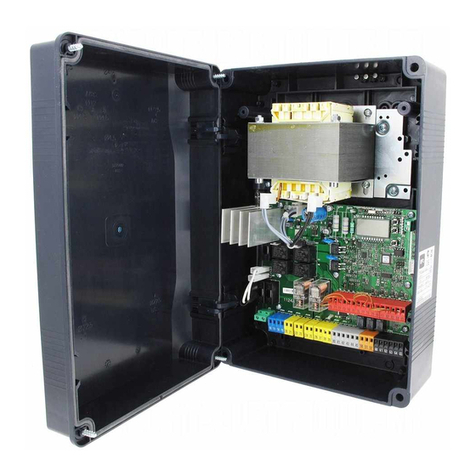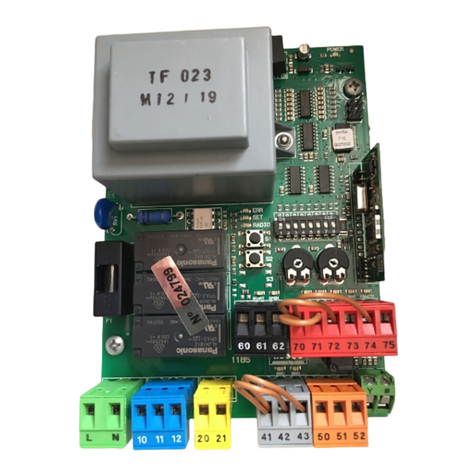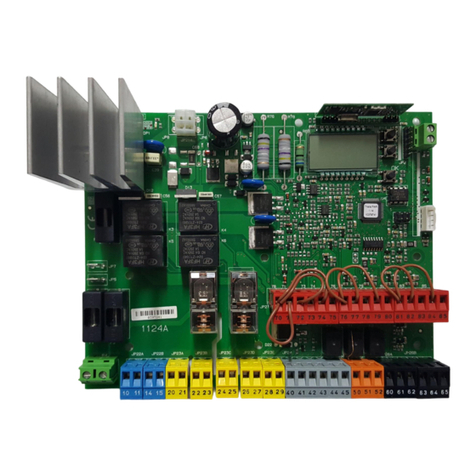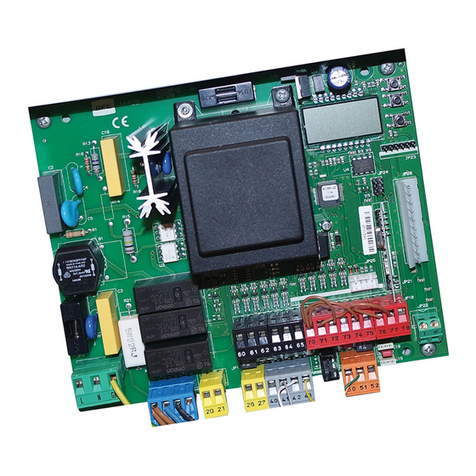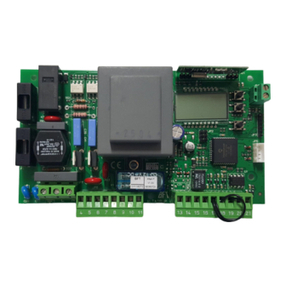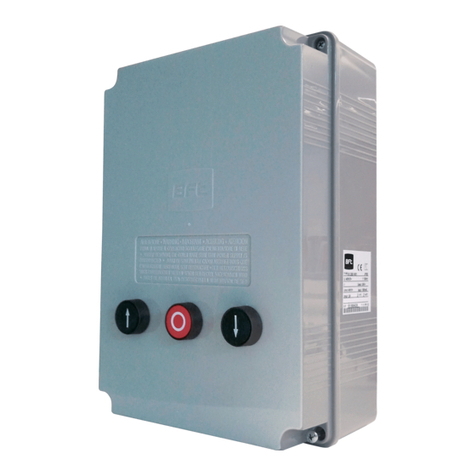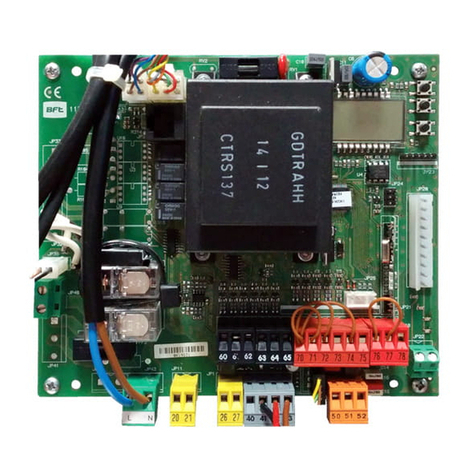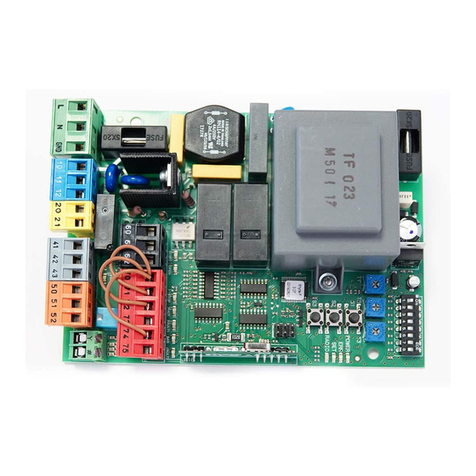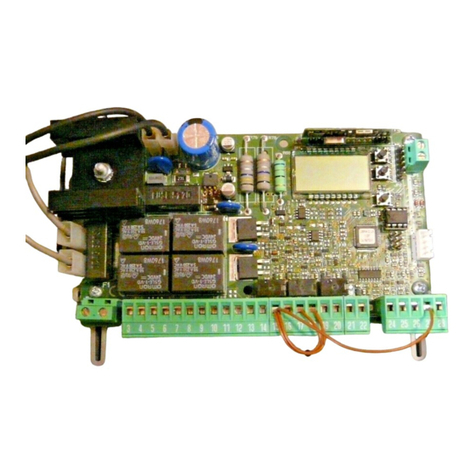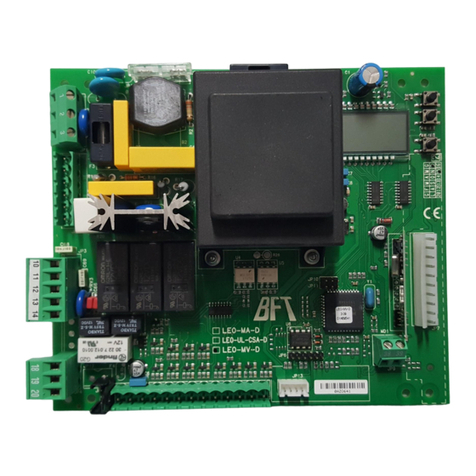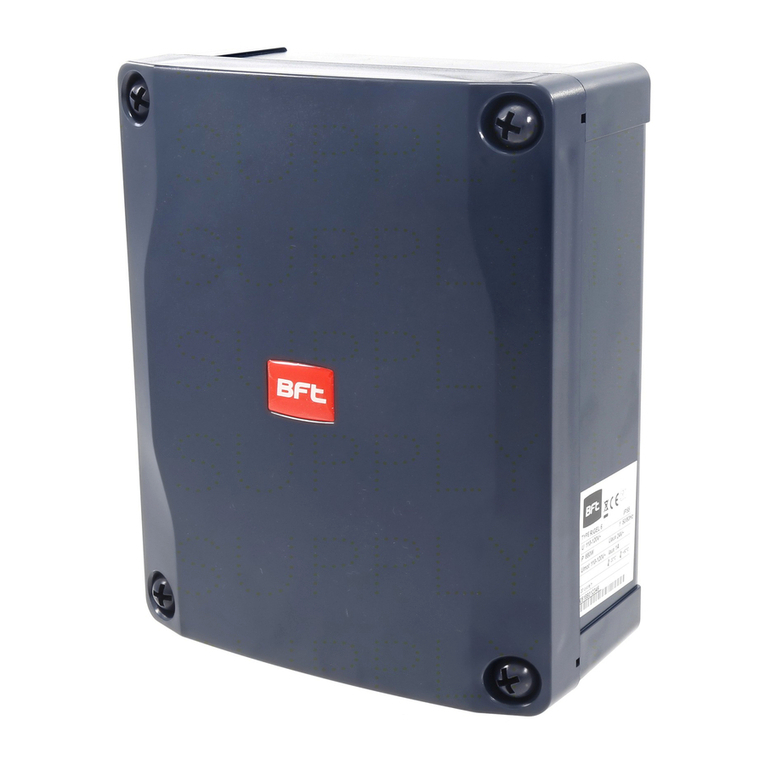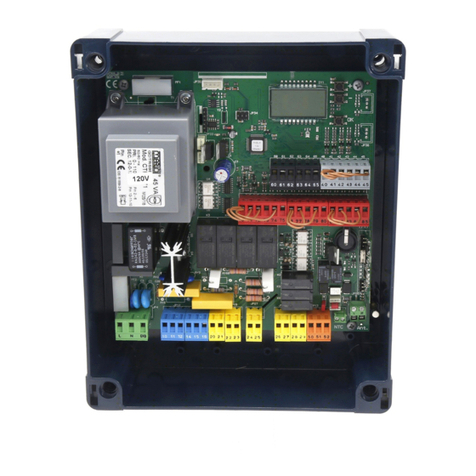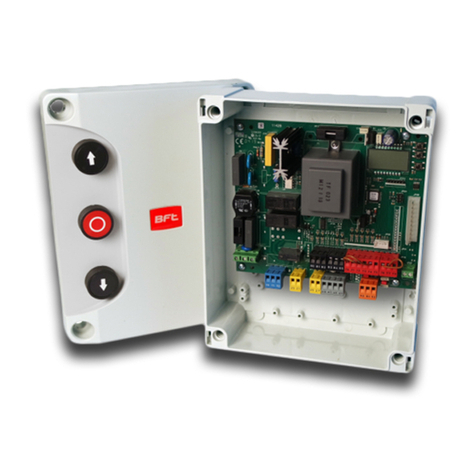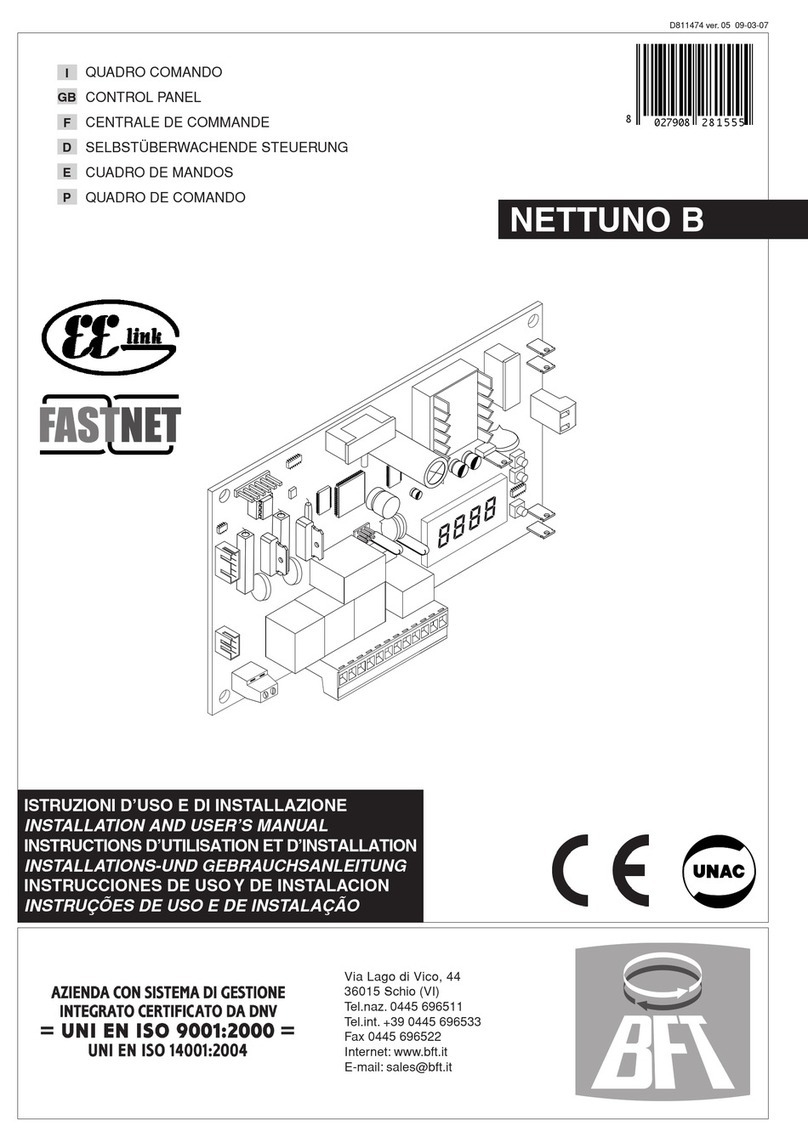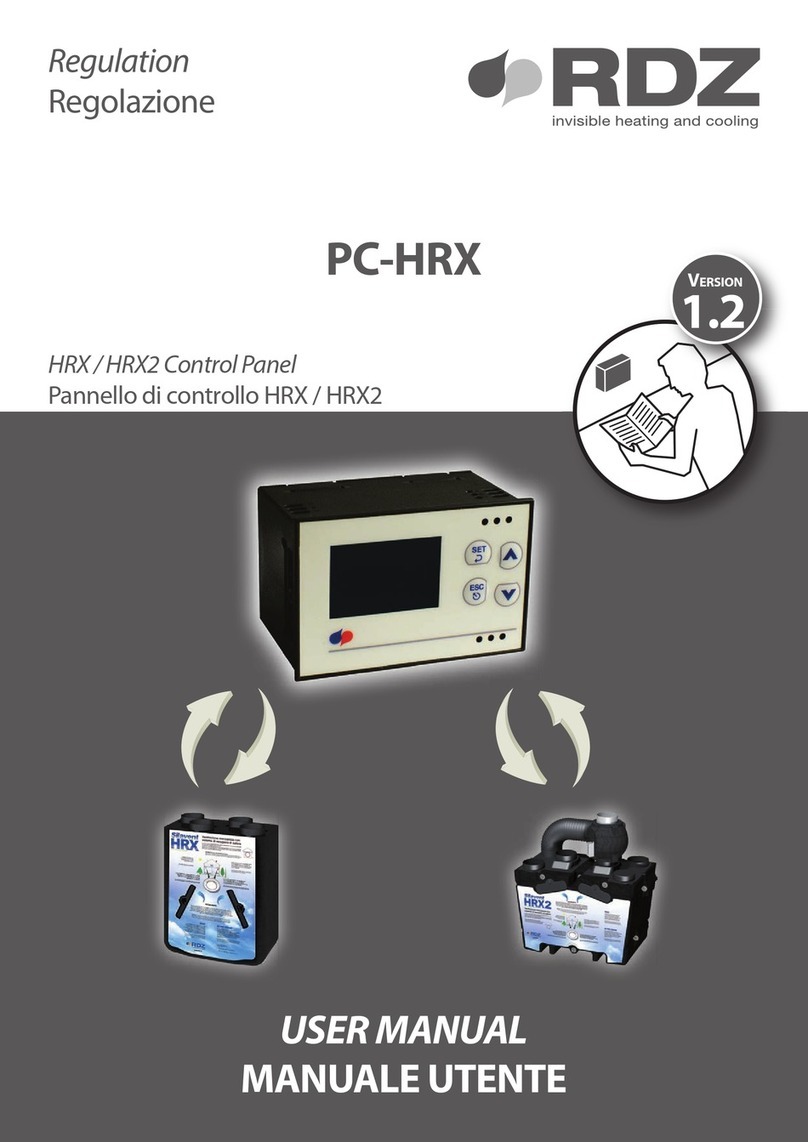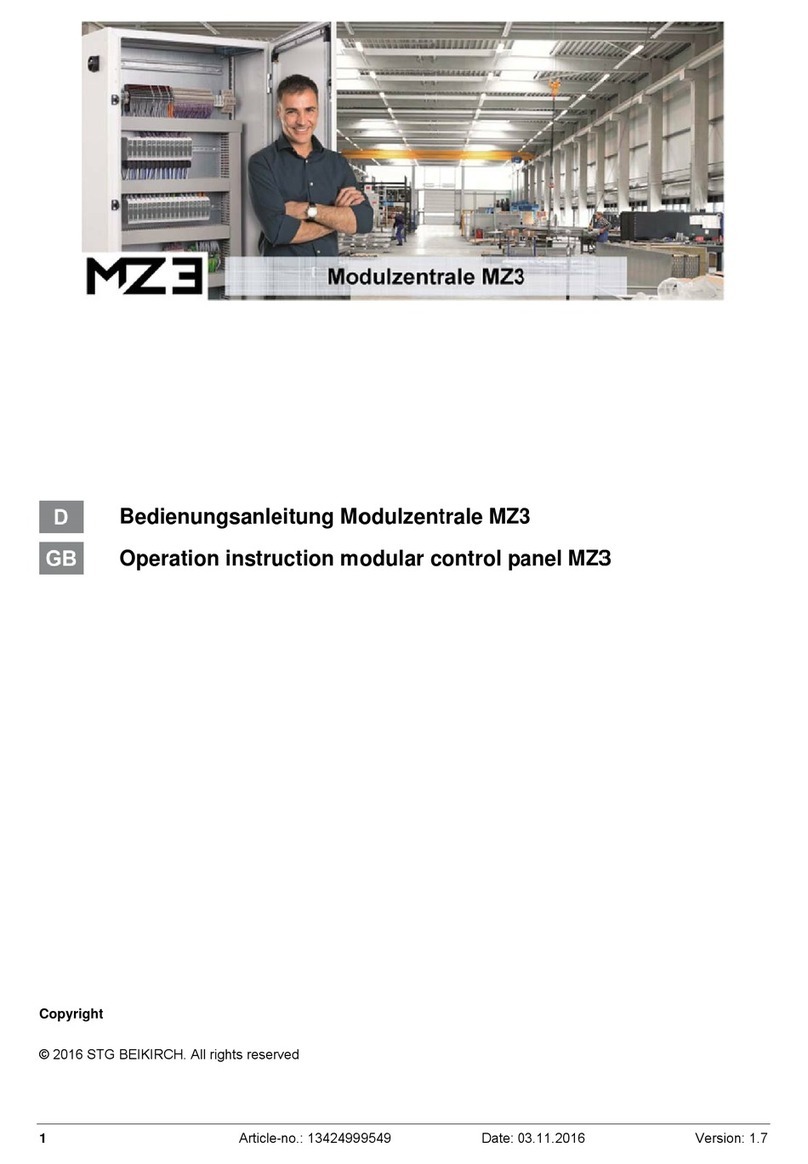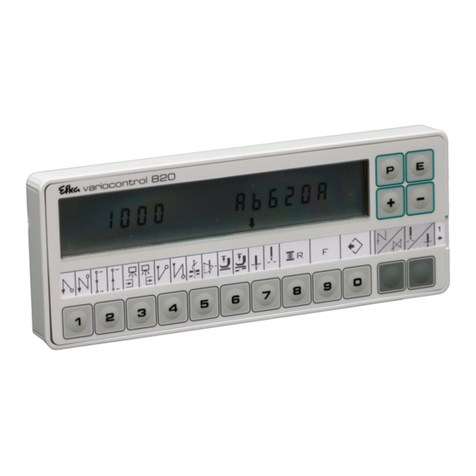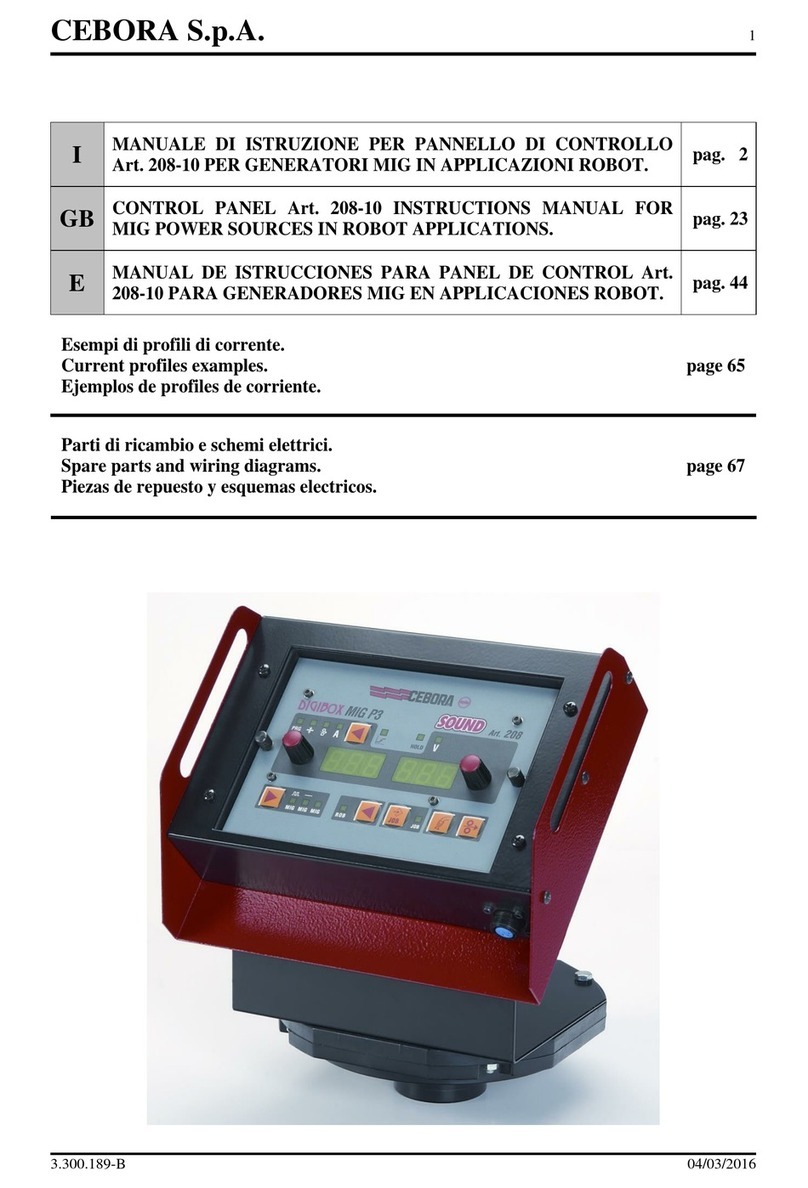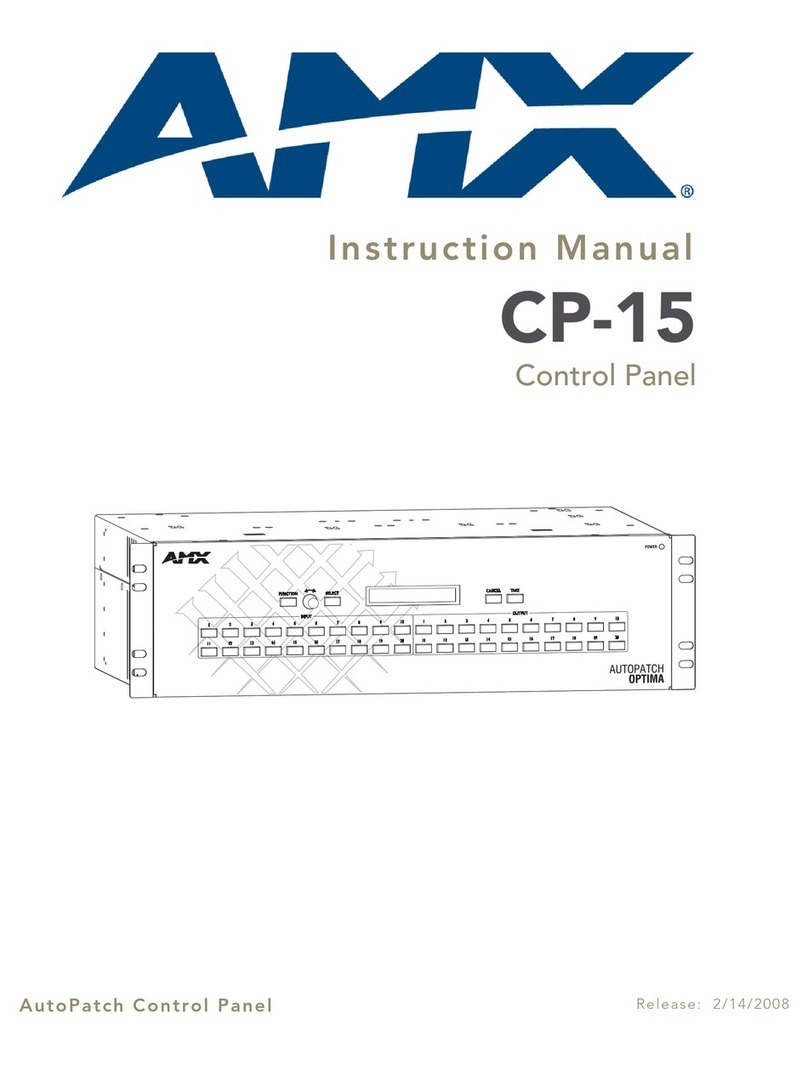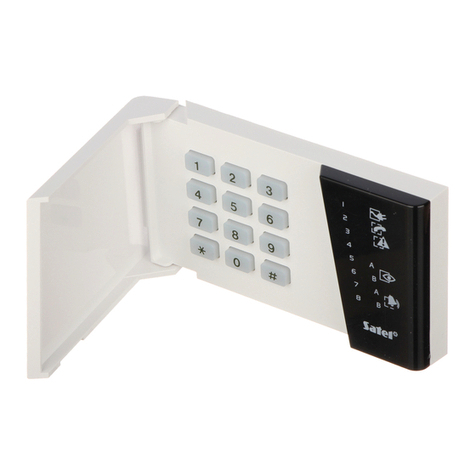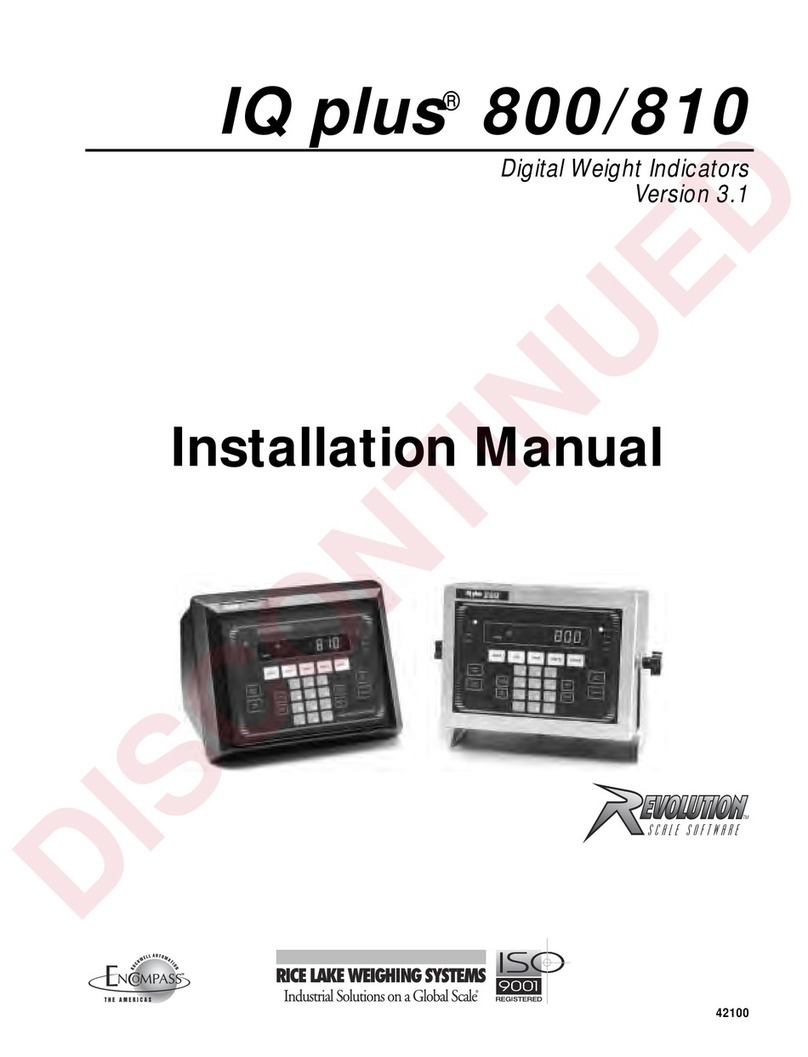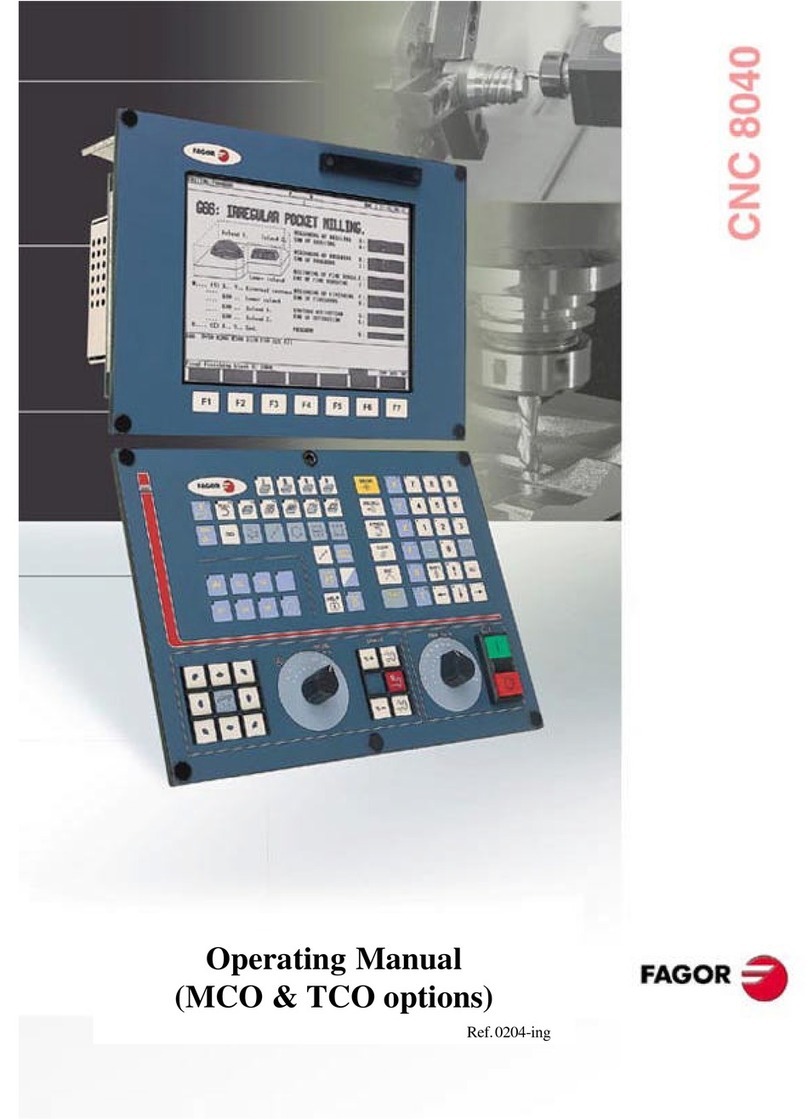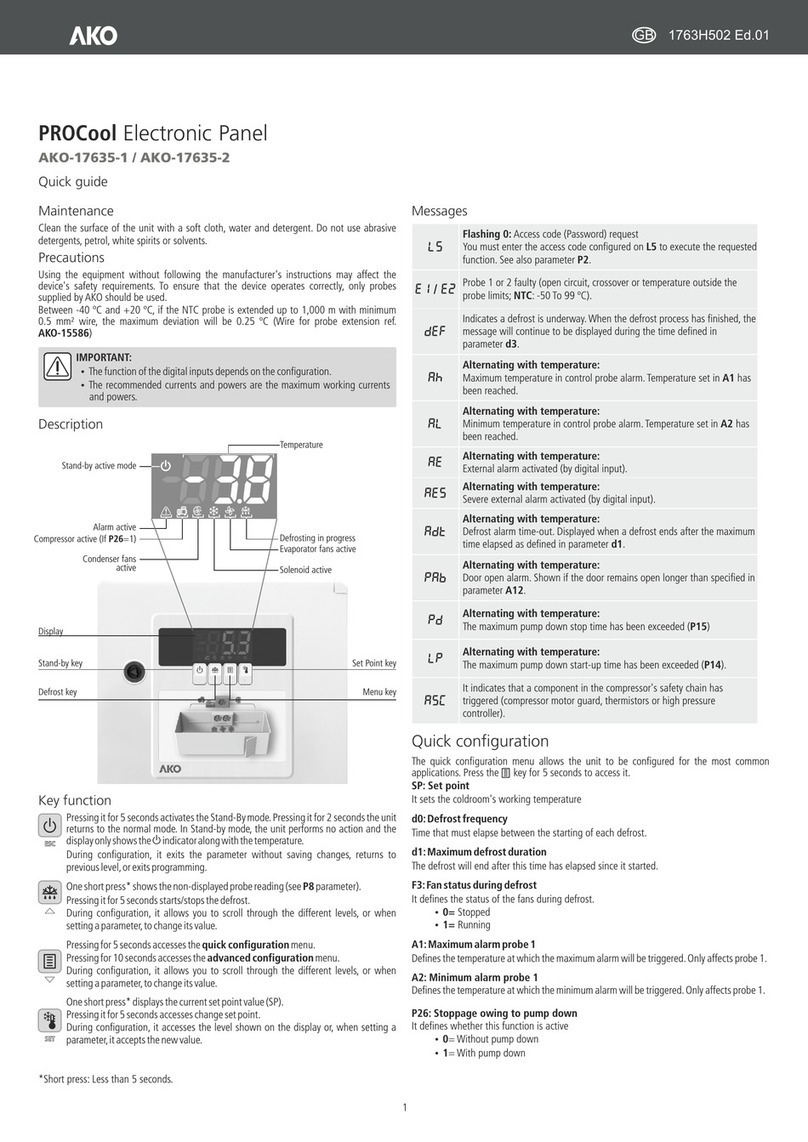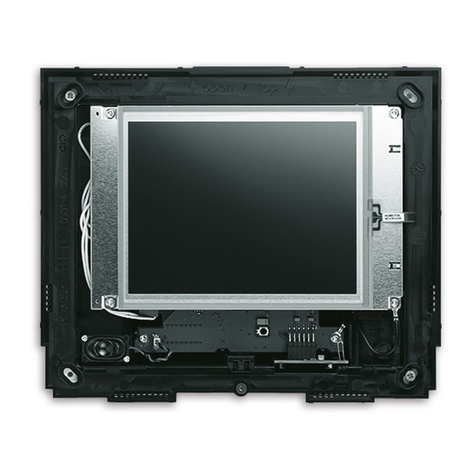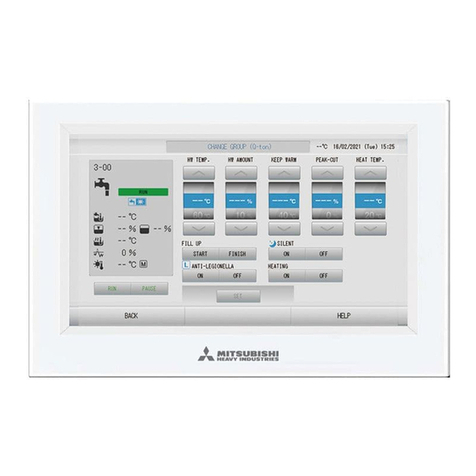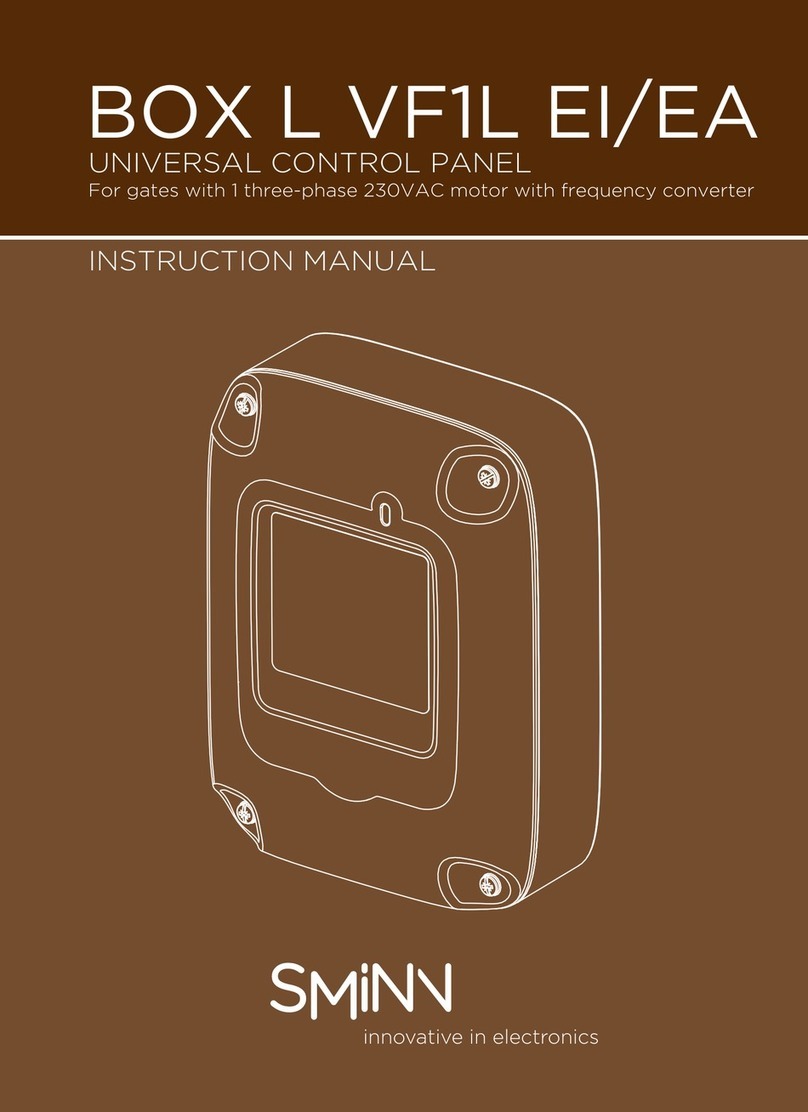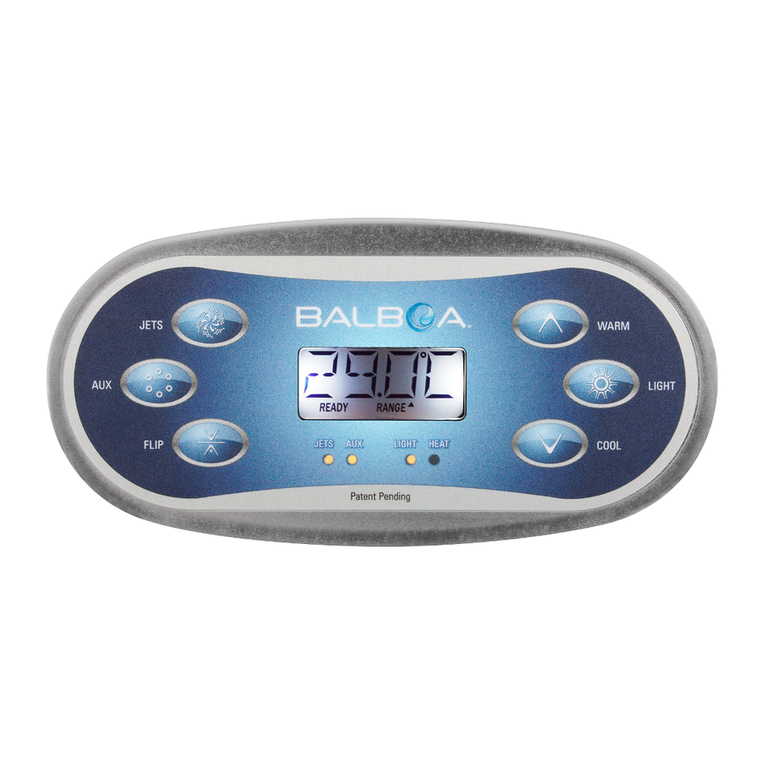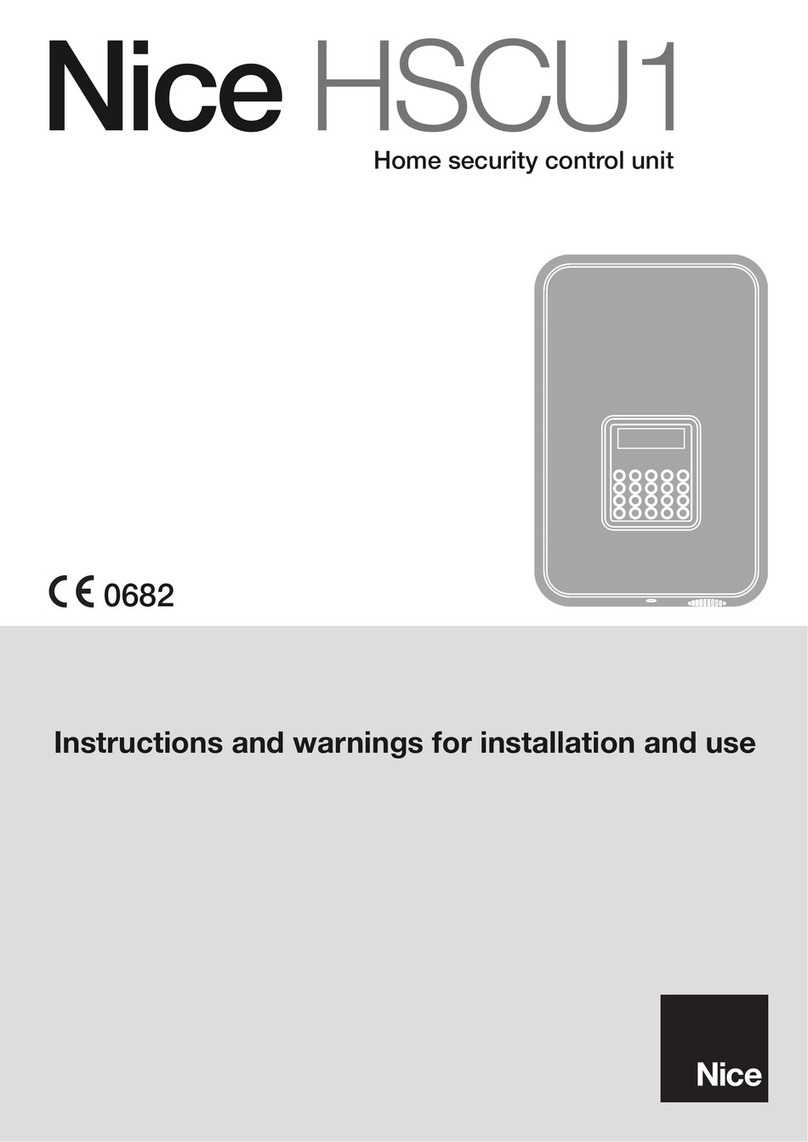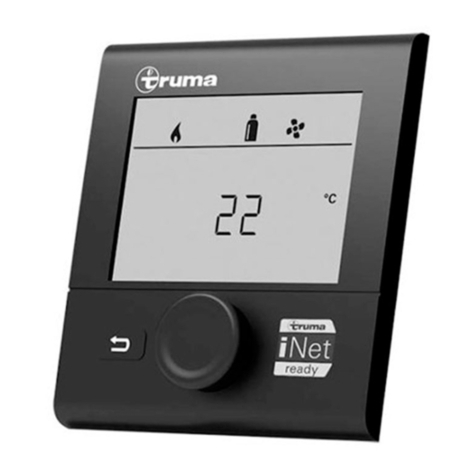
HYDRA - Ver. 07 -
5
D811329_07
MANUAL DE USO
ESPAÑOL
Al agradecerle la preferencia que ha manifestado por este producto, la empresa está
segura de que de él obtendrá las prestaciones necesarias para sus exigencias.Lea
atentamente el “Manual de Instrucciones” que lo acompaña, pues proporciona
importantes indicaciones referentes a la seguridad, la instalación, el uso y el
mantenimiento.
Este producto cumple los requisitos establecidos por las normas reconocidas de la
técnica y las disposiciones relativas a la seguridad, y es conforme a las siguientes
directivas europeas: 89/336/CEE, 73/23/CEE, 98/37/CEE y modificaciones
sucesivas.
1) DATOS GENERALES
El cuadro de mandos HYDRA es adecuado para gobernar a 1 ó 2 servomotores de
la serie PHEBE, proyectados para automatizar puertas basculantes de varios tipos.
El cuadro puede:
- Estar incorporado en el motor, en la serie PHEBE (fig. 1).
- Montarse en la pared (fig. 2). Debe utilizarse con servomotores sin central
incorporada (serie PHEBE -SQ).
En caso de que se quiera automatizar una puerta basculante con dos motores, son
posibles 2 configuraciones:
-n°1 PHEBE + n°1 PHEBE -SQ.
-n°2 PHEBE -SQ + n°1 HYDRA con cuadro montado en la pared.
Essuministrado porelconstructor conconfiguraciones funcionales standard.Cualquier
variación debe configurarse mediante el programador con display incorporado o
mediante UNIPRO y UNIRADIO. La Central soporta completamente el protocolo
EELINK.
2) FUNCIONES
PARA EL INSTALADOR: Es aconsejable rellenar la tabla con los parámetros
configurados, con el objeto de facilitar futuras modificaciones y operaciones de
mantenimiento.Entre paréntesis cuadrados [ ], están indicados los valores de
fábrica. En las lógicas de funcionamiento, [ OFF ] indica opción no activada, [ ON ]
indica opción activada.
MENU PARAMETROS
Tiempo Cierre Automático [10s] ___
Par motores apertura [50%] ___
Par motores cierre [50%] ___
Dirección de zona para mandos centralizados [ 1] ___
MENU LOGICAS
Cierre automático activado (TCA) [ OFF ] ___
Lógica de funcionamiento de 3 Pasos [ OFF ] ___
Bloquea Impulsos [ OFF ] ___
Fotocélulas en fase de apertura [ OFF ] ___
Test fotocélulas [ OFF ] ___
Luz de aviso de puerta abierta o II°canal radio [ OFF ] ___
Mantenimiento del bloqueo [ OFF ] ___
Prealarma [ OFF ] ___
Radiorreceptor con código fijo [ OFF ] ___
Prog. Radio [ OFF ] ___
Tarjeta en anillo cerrado para mandos centralizados [ OFF ] ___
Tarjeta master para mandos centralizados [ OFF ] ___
3) DEMOLICION
Atención: Sírvase exclusivamente de personal cualificado.
La eliminación de los materiales debe hacerse de conformidad con las normas
vigentes. En caso de demolición, no existen particulares peligros o riesgos que
deriven del producto mismo. Es oportuno, en caso de recuperación de los materiales,
que se separen por tipos (partes eléctricas, cobre, aluminio, plástico, etc.).
4) DESMANTELAMIENTO
Atención: Sírvase exclusivamente de personal cualificado.
En el caso de que la central se desmonte para después volver a montarla en otro
lugar, hay que realizar lo siguiente:
• Cortar el suministro de corriente y desconectar toda la instalacióneléctrica.
• En el caso de que algunos componentes no se puedan sacar o resulten dañados,
será necesario sustituirlos.
5) ADVERTENCIAS
Es necesario:
• Asegurarse de que haya, en la red de alimentación del automatismo, un interruptor
o un magnetotérmico omnipolar con una distancia de abertura de los contactos
igual o superior a 3 mm.
• Asegurarse de que haya, antes de la red de alimentación, un interruptor diferencial
con un umbral de 0,03 A.
• Asegurarse de que los dispositivos de seguridad aplicados a la cancela estén
siempre en función;en caso contrario, habrá que cortar el suministro de corriente,
desbloquear los motores y dirigirse enseguida a personal cualificado.
• No permitir que niños o adultos estacionen en el campo de acción del automati-
smo.
• No dejar radiomandos u otros dispositivos de mando al alcance de los niños para
evitar el accionamiento involuntario del automatismo.
• El usuario debe evitar cualquier intento de intervención o reparación del automa-
tismo y dirigirse exclusivamente a personal cualificado.
El buen funcionamiento del operador resulta garantizado únicamente si se
respetanlosdatoscontenidosenestemanualdeinstrucciones.Laempresano
responde de los daños causados por el incumplimiento de las normas de
instalación y de las indicaciones contenidas en este manual.
Las descripciones y las ilustraciones del presente manual tienen un carácter
puramente indicativo. Dejando inalteradas las características esenciales del
producto,laEmpresasereservalaposibilidaddeaportar,encualquiermomen-
to, las modificaciones que considere convenientes para mejorar técnica,
constructiva y comercialmente el producto, sin la obligación de poner al día
esta publicación.
MANUAL PARA DE USO PORTUGUÊS
Agradecendolhe pela preferência dada a este produto, a Empresa tem a certeza que
do mesmo obterá as prestações necessárias ao seu uso.
Leia atentamente o opúsculo ”Manual de instruções” que o acompanha, pois que
esse fornece indicações importantes respeitantes a segurança, a instalação, o uso
e a manutenção.
Este produto está em conformidade com as normas reconhecidas pela técnica e
pelas disposições relativas à segurança. Confirmamos que o mesmo está em
conformidade com as seguintes directivas europeias: 89/336/CEE, 73/23/CEE, 98/
37/CEE e suas modificações sucessivas.
1) GENERALIDADES
O quadro de comandos HYDRAé apropriado para comandar 1 ou 2 accionadores da
série PHEBE, projectados para automatizar basculantes de variado tipo. O quadro
pode encontrar-se:
- Presente a bordo da série PHEBE (fig. 1)
- Montado no quadro na parede (fig.2), a ser utilizado com accionadores sem central
a bordo (série PHEBE -SQ).
Caso se queira automatizar uma basculante com dois motores, são possíveis 2
configurações:
-n°1 PHEBE + n°1 PHEBE -SQ
-n°2 PHEBE-SQ+ n°1 HYDRAcom quadro, montado na parede.É fornecido pelo
construtor com configurações funcionais standard. Toda e qualquer variação, deve
ser definida através do programador com display incorporado ou através de UNIPRO
e UNIRADIO. A Central suporta completamente o protocolo EELINK.
2) FUNÇÕES
PARA O INSTALADOR: preencher a tabela com os parâmetros definidos, para
facilitar a execução de futuras modificações e manutenções.
Entre parênteses quadrados [ ] estão indicados os valores de fábrica. Para as lógicas
de funcionamento, [ OFF ] indica opção não activa, [ ON ] indica opção activa.
MENU PARÂMETROS
Tempo de Fechamento Automático [10s] ___
Binário motores na abertura [50%] ___
Binário motores no fechamento [50%] ___
Endereço de zona para comandos centralizados [ 1] ___
MENU LÓGICAS
Fechamento automático activo (TFA) [ OFF ] ___
Lógica de funcionamento de 3 Fases [ OFF ] ___
Bloqueia Impulsos [ OFF ] ___
Fotocélulas na abertura [ OFF ] ___
Test fotocélulas [ OFF ] ___
Indicador luminoso de portão aberto ou II°canal rádio [ OFF ] ___
Manutenção do bloqueio [ OFF ] ___
Pré-alarme [ OFF ] ___
Radiorreceptor de código fixo [ OFF ] ___
Prog. Radio [ OFF ] ___
Placa em anel fechado para comandos centralizados [ OFF ] ___
Placa master para comandos centralizados [ OFF ] ___
3) DEMOLIÇÃO
Atenção: Use exclusivamente pessoal qualificado.
A eliminação dos materiais deve ser feita respeitando-se as normas legais e técnicas
vigentes.Em casode demolição,não existemperigos particulares ou riscos derivantes
do próprio produto. É oportuno, em caso da reciclagem dos materiais, que esses
sejam separados por tipologia (partes eléctricas, cobre, alumínio, plástico, etc.).
4) DESMANTELAMENTO
Atenção: Use exclusivamente pessoal qualificado.
No caso em que a central seja desmontada para depois ser remontada num outro
sítio, é necessário:
• Interromper alimentação e desligar todo o sistema eléctrico.
• No caso em que alguns componentes não possam ser removidos ou
estejam danificados, efectuar a substituição dos mesmos.
5) RECOMENDAÇÕES
• Acertar-se quena redede alimentação daautomatização,hajaum interruptor ou um
magnetotérmicoomnipolarcom distância deabertura dos contactosigualou superior
a 3mm.
• Acertar-se que a montante da rede de alimentação, haja um interruptor diferencial
com limiar de 0.03A.
• Acertar-se que os dispositivos de segurança instalados no portão, estejam sempre
em boas condições de funcionamento; caso contrário, interromper a alimentação,
desbloquear os motores e consultar imediatamente pessoal qualificado.
• Não permitir que pessoas e crianças fiquem paradas no raio de acção da
automatização.
• Nãodeixeradiocomandosououtrosdispositivosde comandoaoalcancede crianças,
para evitar accionamentos involuntários da automatização.
• Outilizadordeveevitardeefectuarqualquertentativadeintervençãoou dereparação
da automatização e servir-se unicamente de pessoal qualificado.
O bom funcionamento do operador é garantido, somente se forem respeitados
osdadoscontidosnestemanual.Aempresanãorespondepordanosprovocados
pela inobservância das normas de instalação e das indicações contidas neste
manual.
Asdescriçõeseasilustraçõesdestemanualnãoconstituemumcompromisso.
Mantendo inalteradas as características essenciais do produto, a Empresa
reservase o direito de efectuar em qualquer momento as modificações que
julgar convenientes para melhorar as características técnicas, de construção
e comerciais do produto, sem comprometerse em actualizar esta publicação.
